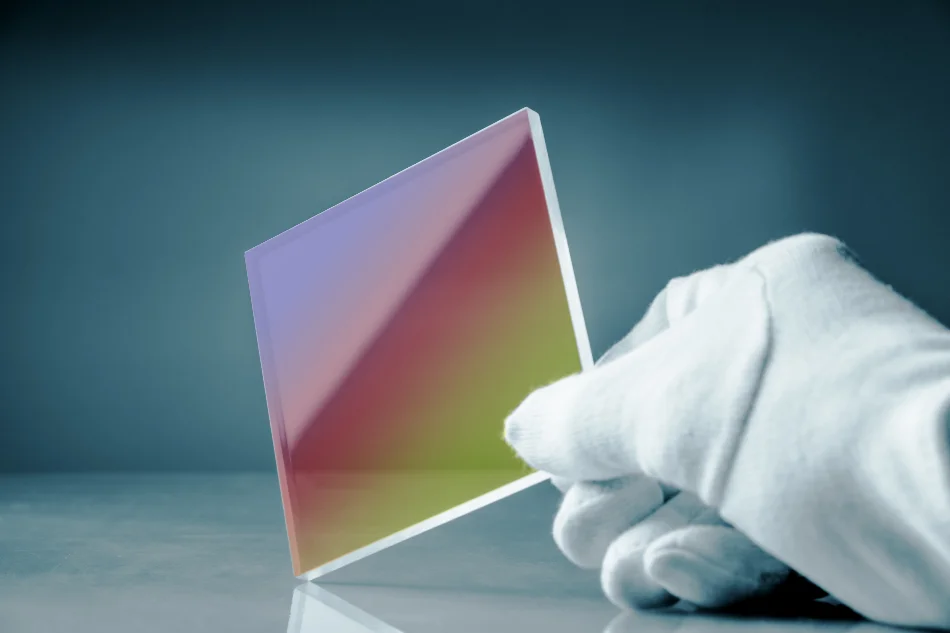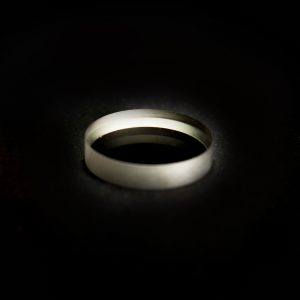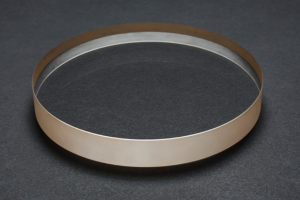The optical film is realized in a high vacuum coating cavity. The conventional coating process requires increasing the substrate temperature (usually about 300 ℃); More advanced technologies, such as ion assisted deposition (IAD), can be carried out at room temperature.
IAD process not only produces films with better physical properties than conventional coating process, but also can be applied to substrates made of plastics. Figure 19.11 shows an operator in front of the optical coating machine. The main vacuum pumping system consists of two cryogenic pumps. The control modules of electron beam evaporation, IAD deposition, light control, heater control, vacuum pumping control and automatic process control are all on the front panel of the coating machine.
Figure 19.12 shows the hardware layout assembled on the substrate of the high vacuum coater. Two electron gun sources are located on both sides of the substrate, surrounded by an annular cover and covered by a baffle. The ion source is located in the middle, and the light control window is in front of the ion source. Figure 19.13 shows the top of the vacuum chamber with a planetary system with six circular clamps.
The fixture is used to place the coated optical elements. The use of planetary system is the preferred method to ensure the uniform distribution of evaporated material in the fixture area. The fixture rotates about its common axis and its own axis at the same time. The optical control and crystal control are located in the middle of the planetary drive mechanism, and the drive shaft blocks the crystal control. The large opening on the back leads to an additional high vacuum pump. The base heating system consists of four quartz lamps, two on both sides of the vacuum chamber.
The traditional method of thin film deposition has always been thermal evaporation, or resistance heating evaporation source or electron beam evaporation source. The characteristics of thin films mainly depend on the energy of deposited atoms, which is only about 0.1eV in traditional evaporation. IAD deposition leads to the direct deposition of ionized vapor and increases the activation energy of the growing film, usually on the order of 50ev. The ion source directs the beam from the ion gun to the substrate surface and the growing film to improve the film characteristics of traditional electron beam evaporation.
The optical properties of the film, such as refractive index, absorption and laser damage threshold, mainly depend on the microstructure of the film. The film material, residual gas pressure and substrate temperature may affect the microstructure of the film. If the mobility of evaporated atoms on the substrate surface is low, the film will contain micropores. When the film is exposed to moist air, these pores are gradually filled with water vapor.
The filling density is defined as the ratio of the volume of the solid part of the film to the total volume of the film (including voids and micropores). For optical films, the filling density is usually 0.75 ~ 1.0, mostly 0.85 ~ 0.95, and rarely 1.0. The filling density less than l makes the refractive index of the evaporated material lower than that of its block.
During deposition, the thickness of each layer is monitored by optical or quartz crystals. These two technologies have their own advantages and disadvantages, which will not be discussed here.
The common point is that when the materials evaporate, they are all used in vacuum. Therefore, the refractive index is the refractive index of the evaporated materials in vacuum, not the refractive index of the materials exposed to humid air. The moisture absorbed by the film replaces the micropores and voids, resulting in the increase of the refractive index of the film. Since the physical thickness of the film remains unchanged, this increase in refractive index is accompanied by the corresponding increase in optical thickness, which in turn causes the spectral characteristics of the film to drift to the long wave direction.
In order to reduce the spectral drift caused by the volume and number of micropores in the film, high-energy ions are used to transfer their momentum to the evaporating material atoms, so as to greatly increase the mobility of the material atoms during condensation at the substrate surface.




